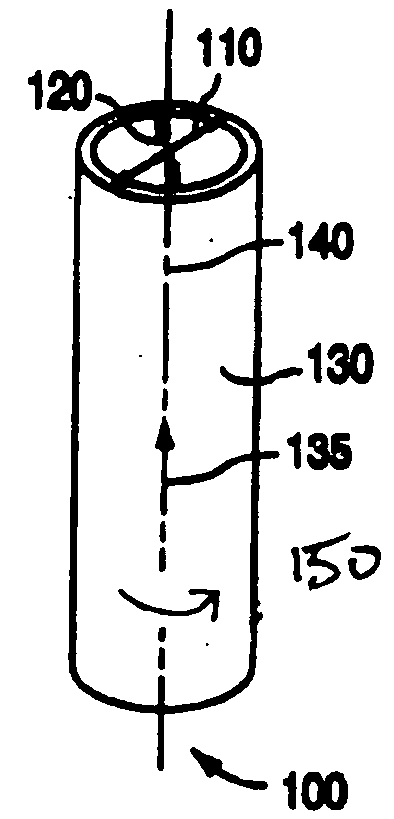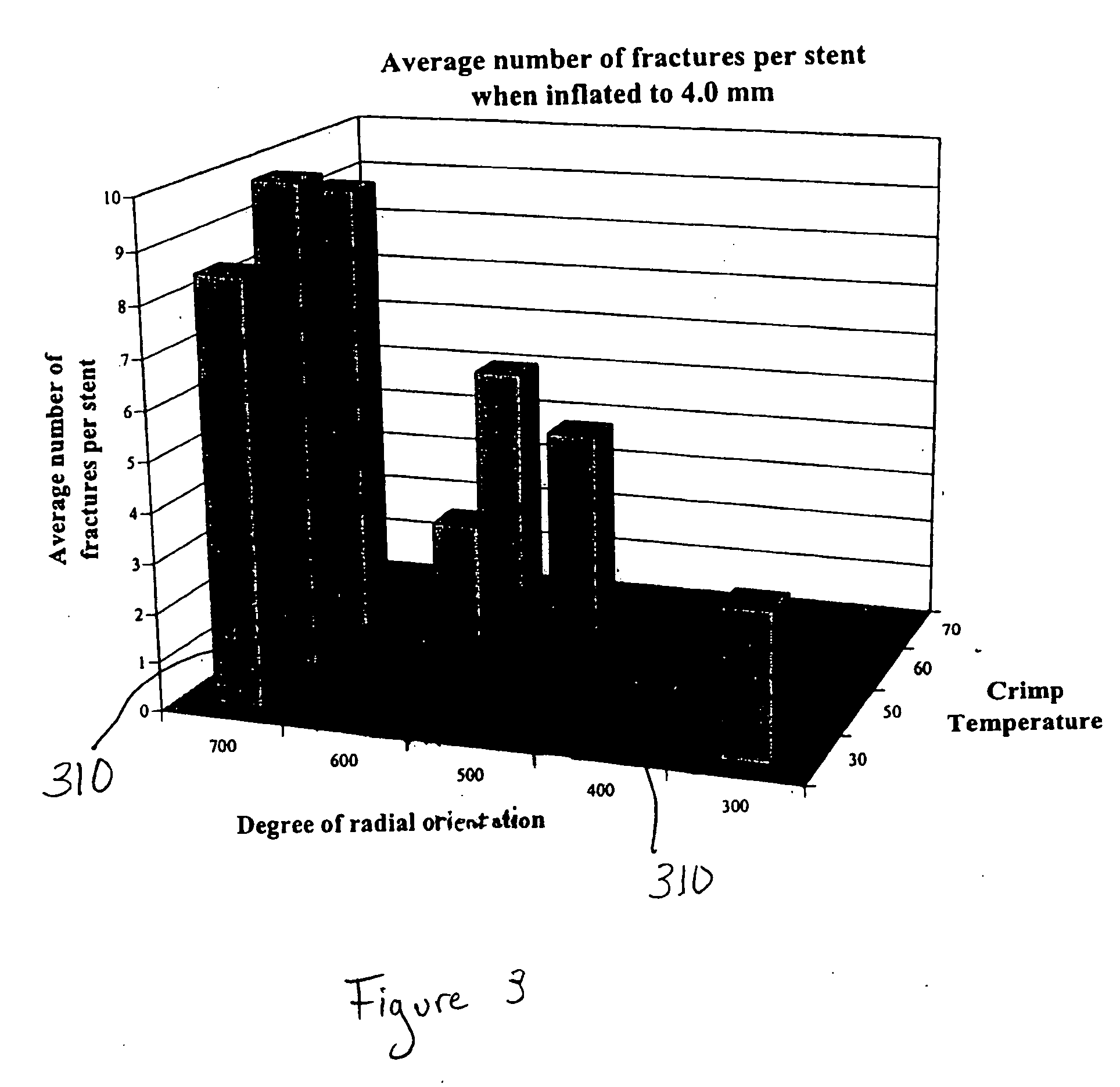Optimizing fracture toughness of polymeric stent
a polymer and stent technology, applied in the field of degradable polymeric implantable medical devices, can solve the problems of reducing the strength of the stent, so as to achieve optimal fracture toughness, optimal fracture toughness, and optimal fracture toughness
- Summary
- Abstract
- Description
- Claims
- Application Information
AI Technical Summary
Benefits of technology
Problems solved by technology
Method used
Image
Examples
Embodiment Construction
[0017]Various embodiments of the present invention relate to implantable medical devices configured to have particular mechanical properties such as strength and flexibility. The device as a whole may have desirable properties by controlling the degree of radial expansion and crimping temperature. Therefore, desirable mechanical and / or degradation properties in an implantable medical device may be obtained by controlling the degree of radial expansion and crimping temperature during fabrication of the stent.
[0018]“Stress” refers to force per unit area, as in the force acting through a small area within a plane. Stress can be divided into components, normal and parallel to the plane, called normal stress and shear stress, respectively. Tensile stress, for example, is a normal component of stress applied that leads to expansion (increase in length). Compressive stress is a normal component of stress applied to materials resulting in their compaction (decrease in length).
[0019]“Toughne...
PUM
| Property | Measurement | Unit |
|---|---|---|
| temperature | aaaaa | aaaaa |
| crimping temperatures | aaaaa | aaaaa |
| crimping temperatures | aaaaa | aaaaa |
Abstract
Description
Claims
Application Information
 Login to View More
Login to View More - R&D
- Intellectual Property
- Life Sciences
- Materials
- Tech Scout
- Unparalleled Data Quality
- Higher Quality Content
- 60% Fewer Hallucinations
Browse by: Latest US Patents, China's latest patents, Technical Efficacy Thesaurus, Application Domain, Technology Topic, Popular Technical Reports.
© 2025 PatSnap. All rights reserved.Legal|Privacy policy|Modern Slavery Act Transparency Statement|Sitemap|About US| Contact US: help@patsnap.com



